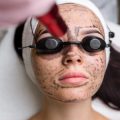1. Understanding Ethnic Skin Diversity in the UK
The United Kingdom is renowned for its vibrant multicultural landscape, bringing together people from a wide array of ethnic backgrounds. This diversity is beautifully reflected in the spectrum of skin tones and types found across the country, from fair to olive, brown, and deep complexions. Each skin type presents unique characteristics, including variations in melanin content, texture, and sensitivity levels. These distinctions are far more than skin deep—they play a crucial role in shaping individual aesthetic needs and preferences. When it comes to injectables and fillers, such as dermal fillers or anti-wrinkle treatments, recognising these differences is essential for safe and effective outcomes. Practitioners in the UK must be attuned to the specific requirements of ethnic skin, understanding how factors like pigmentation tendencies, scarring risks, and facial anatomy influence treatment decisions. By appreciating this rich diversity, clinics can offer truly personalised care that enhances natural beauty while respecting cultural identity and individual aspirations.
Science Behind Injectables and Fillers for Diverse Skin
Understanding the science behind injectables and fillers is essential when it comes to tailoring aesthetic treatments for the UK’s richly diverse population. The physiological differences between various skin types—such as thickness, collagen density, melanin content, and propensity for scarring or pigmentation—play a significant role in how injectable treatments are selected and administered. By taking these nuances into account, practitioners can achieve natural, harmonious results while minimising risks.
Key Physiological Differences in Ethnic Skin Types
| Skin Type | Common Characteristics | Considerations for Injectables & Fillers |
|---|---|---|
| Darker Skin (Fitzpatrick IV-VI) | Higher melanin levels Increased risk of post-inflammatory hyperpigmentation Thicker dermis |
Gentle injection techniques Choose non-inflammatory products Monitor for pigmentation changes |
| Lighter Skin (Fitzpatrick I-III) | Lower melanin More visible redness or bruising Thinner dermal layer |
Cautious with needle depth Manage bruising risk Focus on subtle volume restoration |
| Asian Skin | Compact collagen fibres Tendency towards keloid scarring Sensitive to swelling |
Avoid overcorrection Use low allergenic products Minimise trauma during procedures |
| Mediterranean & Middle Eastern Skin | Moderate to high melanin Prone to both pigmentation and oiliness Robust skin structure |
Select fillers compatible with oilier complexions Monitor for delayed pigment changes Use hyaluronic acid-based options where suitable |
The Impact on Treatment Choices and Outcomes
The interplay of these physiological factors means that a one-size-fits-all approach simply won’t do. For example, individuals with higher melanin content require careful selection of product type and injection technique to avoid unwanted pigmentation. Conversely, those with thinner skin may need lighter filler formulations to prevent lumps or visible irregularities. The practitioner’s expertise in recognising these differences ensures safer, more effective, and aesthetically pleasing outcomes.
Why Personalisation Matters in the UK Context
The UK is home to an incredible array of ethnic backgrounds, each with unique skin attributes. By respecting and understanding these differences—rooted in both science and lived experience—aesthetic professionals can deliver results that empower clients, enhance their natural beauty, and foster confidence. This commitment to personalisation underpins not only safety but also celebrates the individuality of every client walking through the clinic door.
![]()
3. Tailoring Aesthetic Treatments: Best Practices
Delivering safe and effective injectables and fillers for ethnic skin in the UK requires a nuanced, personalised approach. Recognising the unique characteristics of every individual’s skin is essential—not only to ensure optimal results, but also to respect and enhance their natural beauty. British practitioners are increasingly adopting bespoke treatment plans that celebrate diversity while prioritising safety.
Consultation: The Cornerstone of Personalisation
Every successful aesthetic journey begins with a thorough consultation. For clients from diverse ethnic backgrounds, it’s vital to consider factors such as skin tone, texture, facial structure, and cultural aesthetic preferences. Open dialogue helps to set realistic expectations and fosters trust. In the UK, practitioners are encouraged to listen carefully and understand each client’s goals, ensuring that treatment plans are tailored to suit both their anatomical features and personal sense of beauty.
Understanding Skin Biology
Ethnic skin may have differences in melanin levels, collagen density, and risk of pigmentation changes post-procedure. Skilled injectors in Britain take these elements into account when selecting products and techniques, opting for gentle approaches that minimise trauma and reduce the risk of complications such as hyperpigmentation or scarring.
Choosing the Right Products and Techniques
Customising injectable and filler treatments means choosing formulations that best complement each skin type. For example, softer fillers might be recommended for areas requiring subtle enhancement, while specific techniques can help prevent uneven results or over-correction. Practitioners often use micro-cannulas or smaller gauge needles for greater precision and safety—especially important for clients with thicker or more resilient skin types.
Ultimately, tailoring treatments is about celebrating individuality. By combining clinical expertise with a deep respect for cultural identity, UK professionals ensure that every client receives care that not only enhances their appearance but also honours who they are. This mindful approach builds confidence, creates harmonious results, and upholds the highest standards of safety for all.
4. Common Concerns and Myths in Ethnic Skin Aesthetics
When it comes to injectables and fillers for ethnic skin in the UK, a number of questions and concerns are frequently raised. Misinformation can make individuals hesitant, but understanding the facts is essential for making informed choices about aesthetic treatments. Below, we address some of the most common myths and queries encountered in UK clinics, empowering you to approach your treatment journey with confidence.
Frequently Asked Questions
| Question | Fact |
|---|---|
| Will fillers look unnatural on darker skin tones? | No. When performed by experienced practitioners familiar with ethnic skin, results can be subtle and natural-looking, enhancing unique features rather than masking them. |
| Are people with ethnic skin more prone to complications like hyperpigmentation? | Ethnic skin does have a higher risk for pigmentation changes, but proper technique, suitable product selection, and aftercare minimise this risk significantly. |
| Is it true that injectables don’t work as well on ethnic skin? | This is a misconception. Injectables such as hyaluronic acid fillers and botulinum toxin are effective across all skin types when tailored to the individual’s needs. |
| Can certain fillers cause keloids or excessive scarring? | Keloid formation is rare with injectables when administered correctly. A thorough consultation will assess your risk factors prior to treatment. |
Debunking Popular Myths
- Myth: All skin reacts the same way to injectables.
In reality, each skin type has unique characteristics—such as thickness and underlying structure—which must be considered for optimal outcomes. - Myth: People with darker complexions should avoid aesthetic treatments.
There is no need to avoid these treatments if they are administered by professionals who understand ethnic nuances. Personalisation is key. - Myth: Recovery time is much longer for ethnic skin.
While healing responses can vary slightly, modern techniques and proper aftercare help ensure recovery times are similar across all ethnicities.
Professional Guidance Matters
The UK’s diverse population means practitioners routinely treat patients from many different backgrounds. It’s vital to seek out clinics with experience in treating ethnic skin; they will understand how to tailor products and techniques, reduce risks, and ensure beautiful results. If you’re ever unsure or have specific worries, never hesitate to ask your practitioner for clarification—they are there to guide you every step of the way.
5. The Importance of Practitioner Expertise and Cultural Sensitivity
When it comes to injectables and fillers for ethnic skin in the UK, practitioner expertise goes far beyond technical skill. It’s crucial to seek out professionals who possess a deep understanding of both the clinical requirements unique to diverse skin types and the cultural significance that appearance holds within various communities. Culturally competent practitioners recognise that beauty ideals differ widely, and what might be considered desirable in one culture may not resonate with another. This awareness ensures that treatments are tailored not just to individual facial features, but also to personal values and social identity.
Why Cultural Competence Matters
A culturally sensitive approach builds trust between practitioners and clients, allowing for open conversations about expectations, concerns, and desired outcomes. In the UK’s multicultural society, this is especially important—practitioners must be equipped to listen carefully and adapt their recommendations accordingly. Understanding nuances such as differences in skin structure, healing tendencies, or pigmentary concerns enables safe, effective treatment plans that honour each client’s background.
Clinical Excellence Meets Personal Respect
Expert practitioners stay up-to-date with the latest research on how different skin tones respond to various products and techniques. More importantly, they respect that cosmetic enhancements can have profound personal and cultural implications. By acknowledging these layers of meaning, they empower clients to make confident choices about their appearance without fear of misunderstanding or judgement.
Selecting the Right Professional
For those seeking injectables or fillers in the UK, look for clinics where practitioners demonstrate both clinical excellence and cultural sensitivity. A strong track record with diverse clientele, ongoing training in ethnic skin care, and a commitment to inclusive consultation practices are all indicators of high-quality care. Remember: your practitioner should not only understand the science behind every treatment but also genuinely value your individuality and heritage.
6. Empowering Patients: Education and Aftercare
Providing injectables and fillers for patients with diverse ethnic backgrounds in the UK is about more than just the technical procedure—it’s about empowering individuals through education and thoughtful aftercare. A patient’s journey doesn’t end when they leave the clinic; in fact, ongoing support is crucial for achieving optimal results and maintaining confidence.
Personalised Education for Informed Choices
Begin by offering clear, culturally sensitive explanations about each treatment option, including expected outcomes, risks, and how different skin types may respond. Use everyday British terminology to make information relatable—think “bespoke care” or “tailored approach.” Encourage open dialogue, inviting questions to ensure every patient feels heard and understood, regardless of their background.
Aftercare: Respecting Skin Diversity
Aftercare should never be one-size-fits-all. For patients with richer skin tones, highlight the importance of gentle skincare products to minimise irritation and pigmentation changes. Emphasise sun protection as a non-negotiable step—even in cloudy British weather—to prevent post-inflammatory hyperpigmentation. For those with lighter skin, address sensitivity and the need for hydration to maintain a natural glow.
Support Beyond the Clinic
Offer easy-to-follow aftercare leaflets or digital resources using plain English and visual guides where appropriate. Consider follow-up calls or messages to check on progress, especially for first-time patients who may feel anxious. Remind them that healing times can vary based on individual skin characteristics—a little reassurance goes a long way.
Cultivating Confidence Through Community
Create a welcoming environment where patients from all walks of life feel valued. Share success stories from individuals with similar skin types or backgrounds (with permission), helping new clients see themselves reflected in your practice. By fostering trust and providing culturally attuned support, you empower every patient to embrace their beauty journey with confidence—no matter their ethnicity.


